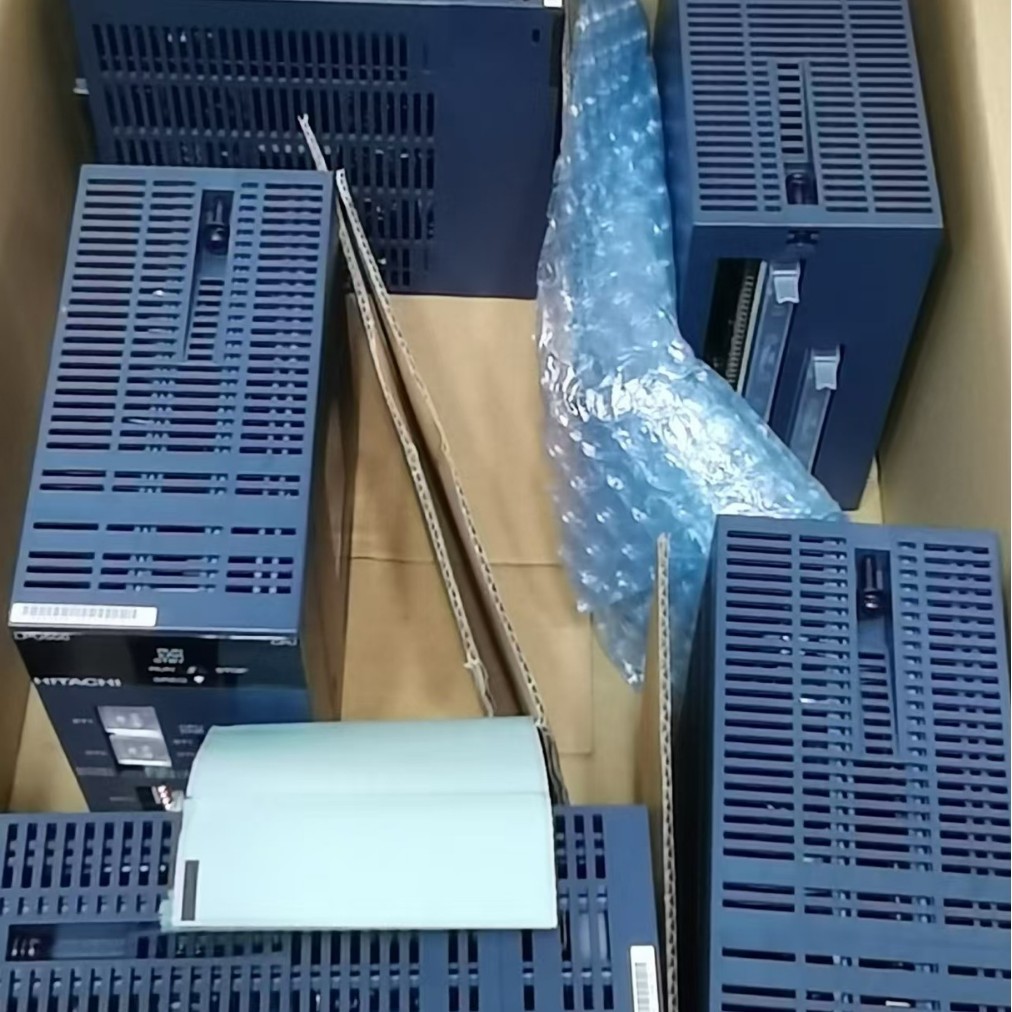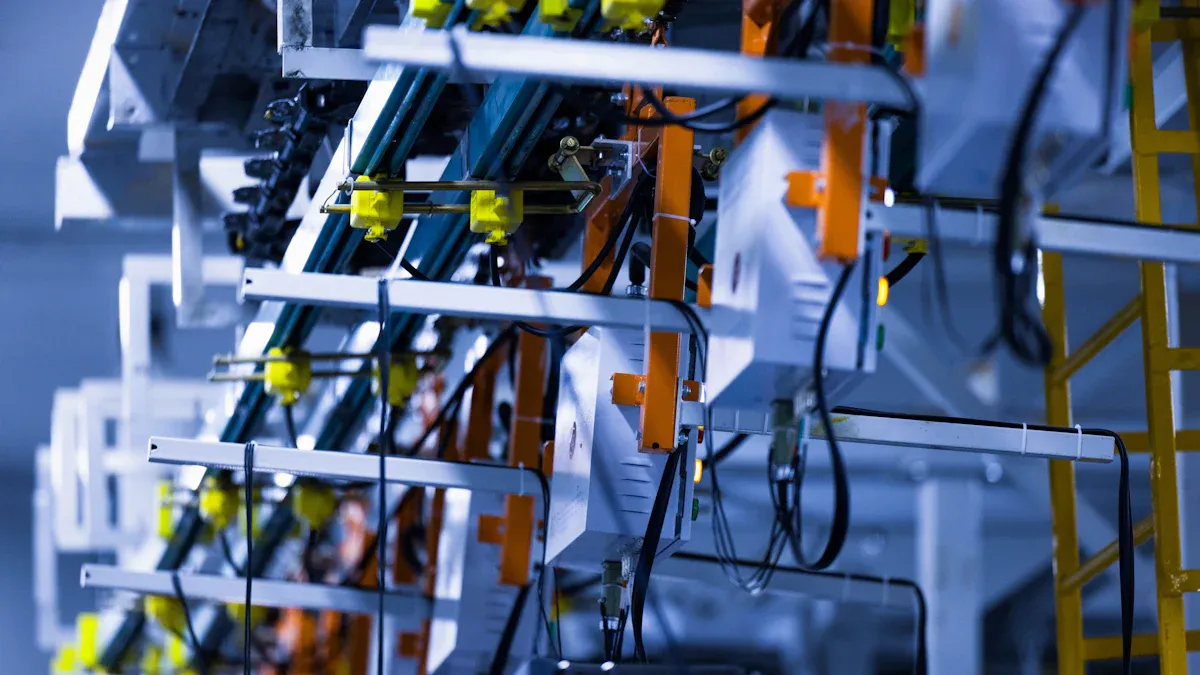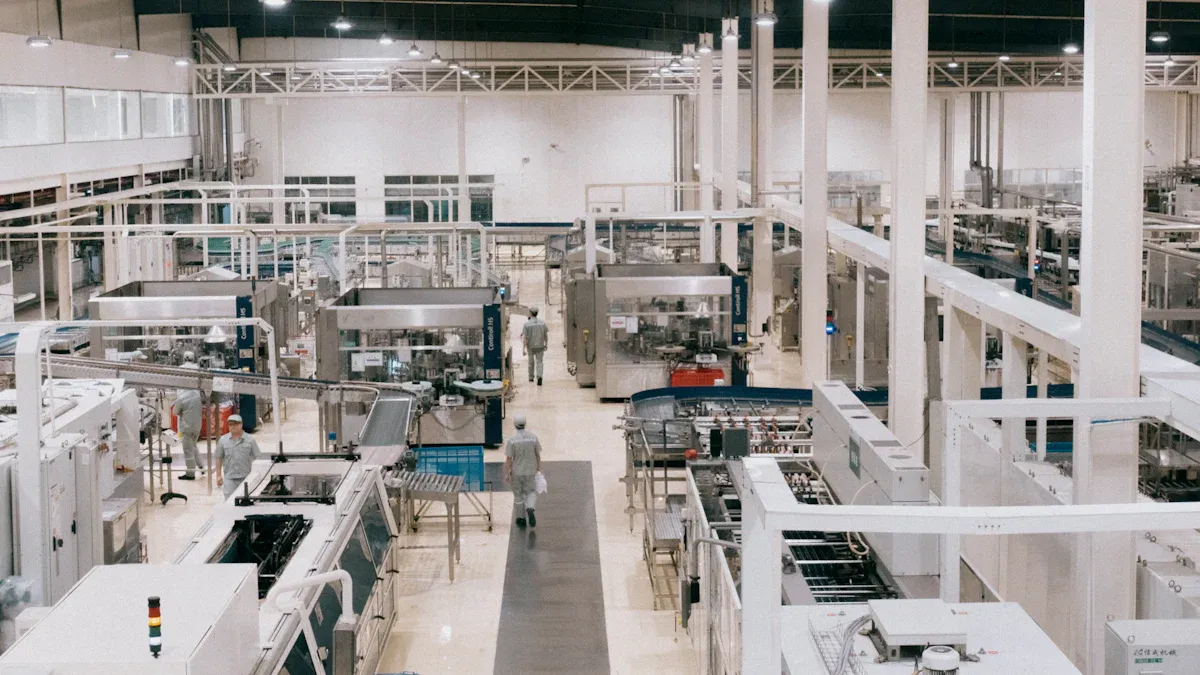“Ứng Dụng Hitachi LNC-500 & LPU-500 Cho Nhà Máy Tại Việt Nam

Vietnamese factories often face electrical noise, power surges, and software errors when using CNC controllers. Upgrading to bộ điều khiển LNC-500 with LPU-500 gives shorter cycle times, smoother surfaces, and easier maintenance. Quick troubleshooting helps factories avoid long downtime. Many industries, such as metalworking, electronics, and wood processing, trust these controllers. Vì Sao Chọn LNC-500 + LPU-500 often comes down to reliability and simple support in tough conditions.
Key Takeaways
Hitachi LNC-500 and LPU-500 controllers improve factory productivity by reducing cycle times and easing maintenance.
Common problems include error codes, communication failures, power issues, and software glitches; quick troubleshooting prevents long downtime.
Regular preventive maintenance like cleaning, checking wiring, and testing backup batteries keeps controllers reliable and extends their life.
Using shielded cables and securing connections helps avoid communication and network problems caused by electrical noise and vibrations.
These controllers serve many industries in Vietnam, including metalworking, electronics, furniture, stone, plastics, and education, offering stable and efficient operation.
Common Issues
Factories in Vietnam often face several challenges when using CNC controllers. These issues can affect productivity and machine reliability. Understanding the most common problems helps operators and technicians keep machines running smoothly.
Error Codes
Error codes appear on the controller display when something goes wrong. Operators see codes for problems like limit switch faults, servo alarms, or overheating. Each code points to a specific issue. For example, a code might signal a motor overload or a communication timeout. Vietnamese factories often report error codes caused by electrical noise or unstable power. High humidity and dust can also trigger sensor errors. Operators should keep a log of error codes and refer to the manual for quick solutions.
Tip: Keeping the controller and its surroundings clean reduces the chance of false error codes.
Communication Failures
Communication failures stop the controller from talking to other devices. These failures can happen between the bộ điều khiển LNC-500 and the LPU-500, or between the controller and a computer. Loose cables, damaged connectors, or interference from nearby machines often cause these problems. In some factories, strong vibrations or high temperatures loosen connections over time. Operators should check all wiring and secure connectors tightly. Using shielded cables helps prevent electrical noise from disrupting signals.
Common causes of communication failures:
Loose or corroded connectors
Electrical interference from nearby equipment
Damaged cables due to heat or movement
Power Problems
Power problems can shut down machines or cause unexpected resets. Vietnamese factories sometimes experience power surges, voltage drops, or grounding issues. These problems may damage sensitive electronics inside the controller. Battery backup loss is another concern. If the backup battery fails, the controller may lose important settings or programs. Regular checks of the power supply and battery help prevent sudden shutdowns.
Power Issue | Possible Cause | Solution |
|---|---|---|
Power surge | Unstable grid | Use surge protectors |
Voltage drop | Overloaded circuits | Check electrical load |
Old or weak battery | Replace battery yearly |
Software Glitches
Software glitches can cause the controller to freeze or behave unpredictably. Programming errors, outdated firmware, or corrupted files often lead to these issues. In Vietnam, high humidity and heat can sometimes affect the reliability of memory chips. Operators should update software regularly and back up important programs. If a glitch occurs, restarting the controller or reloading the program usually solves the problem.
Note: Always follow the manufacturer's instructions when updating software or firmware.
Troubleshooting bộ điều khiển LNC-500

Reset and Power Cycle
Operators often solve many issues with a simple reset or power cycle. When the bộ điều khiển LNC-500 displays an error or stops responding, they should first switch the controller from RUN mode to STOP mode. This action safely halts all machine operations. Next, they can turn off the main power supply for at least 30 seconds. After waiting, they turn the power back on and return the controller to RUN mode. This process clears temporary faults and refreshes the system.
Tip: Always check that all emergency stops are released before restarting the controller.
If the problem continues after a reset, operators should inspect the power source. Unstable voltage or frequent surges can cause repeated shutdowns. Using a surge protector and checking the grounding system helps prevent future issues.
Diagnosing Inputs
Input signals play a key role in the operation of the bộ điều khiển LNC-500. Faulty sensors, loose wires, or dirty connectors can cause the controller to misread signals. Operators should use the diagnostic software provided by the manufacturer to monitor input status. The software displays which inputs are active and which are not.
A step-by-step approach helps identify the source of the problem:
Check the wiring for any loose or broken connections.
Inspect sensors for dust, moisture, or physical damage.
Use the diagnostic screen to test each input one by one.
Replace any faulty sensors or cables.
A clean and dry environment reduces the risk of input errors. In factories with high humidity or dust, regular cleaning of connectors and sensors is essential.
Network Connectivity
The bộ điều khiển LNC-500 often connects to other devices through a network. Reliable communication ensures smooth data transfer between the controller, the LPU-500, and computers. When network issues arise, operators should check all cables and connectors for damage or looseness. Shielded cables help protect against electrical noise from nearby machines.
A simple troubleshooting checklist includes:
Confirm all network cables are securely plugged in.
Look for signs of wear or heat damage on connectors.
Use the controller’s diagnostic tools to test network status.
Update firmware if the manufacturer releases a new version.
Note: Keeping firmware up to date improves compatibility and fixes known bugs.
If the network problem persists, operators may need to manually rebind modules or reset network settings according to the user manual.
Expansion Modules
Many factories use expansion modules to add extra functions to the bộ điều khiển LNC-500. These modules can include additional input/output ports, communication interfaces, or special features. Proper installation and maintenance of these modules ensure stable operation.
Operators should follow these best practices:
Secure all modules tightly to prevent vibration from loosening connections.
Check for correct manual binding of each module during installation.
Use only compatible modules recommended by the manufacturer.
Inspect modules regularly for signs of overheating or dust buildup.
A table can help track module status:
Module Name | Status | Last Checked | Notes |
|---|---|---|---|
I/O Expansion | OK | 01/06/2024 | Clean, no issues |
Network Adapter | Needs check | 15/05/2024 | Minor vibration |
Analog Input | OK | 01/06/2024 | Secure, dust-free |
By following these steps, operators keep the bộ điều khiển LNC-500 running smoothly, even in challenging factory environments.
Factory Applications

Metalworking
Metalworking shops in Vietnam use the LNC-500 and LPU-500 to upgrade old lathes and milling machines. These controllers help factories in Hà Nội, HCMC, and Bắc Ninh produce molds, dies, and precision parts. Operators see faster cycle times and smoother surfaces. Maintenance teams find it easier to replace parts because Hitachi offers good support and spare parts in the region.
Tip: Regular cleaning of controllers in metalworking shops reduces dust buildup and extends equipment life.
Electronics
Electronics factories rely on these controllers for small CNC routers and drillers. Workers use them to make aluminum heatsinks, panels, and fixtures. The LNC-500 and LPU-500 provide stable performance, even in environments with high humidity. Technicians report fewer alarms and less downtime, which keeps production lines moving.
Furniture & Wood
Furniture makers in Đồng Nai and Bình Dương use multi-axis routers with these controllers. The LNC-500 and LPU-500 handle complex shapes and heavy dust loads. Operators notice improved contouring and reliable operation during long shifts. Spare parts are easy to find, which helps reduce machine downtime.
Stone & Building Materials
Factories in Ninh Bình and Nghệ An use these controllers for granite and marble cutting. The LNC-500 and LPU-500 deliver stable speed control, which is important for cutting hard materials. Workers see fewer errors and better surface finishes on stone products.
Plastics & Composites
Plastics factories use these controllers for trimming vacuum-formed parts and running automatic tool changers. The LNC-500 and LPU-500 support fast, repeatable cycles. Maintenance teams appreciate the simple design, which makes repairs quick and easy.
Education & R&D
Universities and vocational colleges choose these controllers for training labs. Students learn CNC programming on real machines. The open design and local support make the LNC-500 and LPU-500 a smart choice for education and research.
Note: Many Vietnamese schools use these controllers to prepare students for modern factory jobs.
Best Practices
Preventive Maintenance
Regular preventive maintenance keeps machines running smoothly. Operators should inspect the controller and its modules every week. They can check for dust, loose wires, or signs of overheating. Cleaning the controller with a dry cloth helps prevent dust buildup. Technicians should also test the backup battery once a month. Replacing the battery every year avoids data loss. A maintenance checklist helps teams remember each step.
Task | Frequency | Notes |
|---|---|---|
Clean controller | Weekly | Use dry cloth only |
Inspect wiring | Weekly | Look for loose wires |
Test backup battery | Monthly | Replace if weak |
Check module status | Monthly | Secure all modules |
Tip: Secure all modules tightly to prevent vibration from causing connection issues.
Error Monitoring
Monitoring error logs helps technicians spot problems early. The bộ điều khiển LNC-500 records error codes and warnings in its system. Operators should review these logs at the end of each shift. They can look for repeated errors or unusual patterns. Quick action on small issues prevents bigger problems later. Keeping a written logbook helps track recurring faults and solutions.
Review error logs daily.
Record error codes and actions taken.
Report unusual patterns to supervisors.
Note: Early detection of errors reduces downtime and repair costs.
Integration Tips
Proper integration ensures the controller works well with other factory systems. Technicians should follow the manufacturer's guidelines during installation. Using shielded cables reduces electrical noise. All network connections must be secure and free from damage. Firmware updates improve compatibility and fix known bugs. Teams should test the system after any changes to confirm stable operation.
Follow official installation manuals.
Use only recommended expansion modules.
Test all functions after updates or repairs.
Good integration leads to long-term reliability and easier troubleshooting.
Operators who follow clear troubleshooting steps and preventive routines keep the bộ điều khiển LNC-500 and LPU-500 running smoothly. Regular maintenance and daily error monitoring help reduce downtime and extend equipment life. Adopting best practices supports stable and efficient factory operations. Staying updated with official resources brings extra benefits:
Resource Type | Description & Benefits |
|---|---|
Literature | Product guides and installation manuals for easy reference. |
Warranties/Training | Warranty details and training programs for proper use and care. |
FAQs & Glossary | Quick answers and clear terms for troubleshooting. |
Rebate Center | Information on rebates for cost savings and compliance. |
IoT Solutions & Controllers | Advanced monitoring and control for better efficiency and reliability. |
Contact & Support Links | Direct help for technical and sales questions. |
Staying connected to these resources helps factories keep up with new features and maintain high performance.
What industries use Hitachi LNC-500 & LPU-500 controllers?
Factories in metalworking, electronics, furniture, stone, plastics, and education use these controllers. They help improve production speed, surface quality, and reliability in many environments across Vietnam.
How often should operators perform preventive maintenance?
Operators should inspect controllers weekly and test backup batteries monthly. Regular cleaning and checking for loose wires help prevent errors and extend equipment life.
Tip: Create a maintenance checklist for easy tracking.
What should technicians do when error codes appear?
Technicians should log the error code, check the manual for solutions, and inspect wiring or sensors. Quick action helps reduce downtime and keeps machines running smoothly.
Where can teams find support and spare parts?
Teams can contact local Hitachi distributors or visit official support websites. Spare parts and technical help are available in major industrial regions.
Resource | Benefit |
|---|---|
Distributor | Fast spare parts |
Website | Technical support |
See Also
Simplified Engine Management Using SPC56 Microcontroller Technology
Step-By-Step Guide To Using AEAT-8800-Q24 In Robotics
Three Key Benefits Of XCF01SVOG20C In Automation Systems
CALL US DIRECTLY
(+86)755-82724686
RM2508,BlockA,JiaheHuaqiangBuilding,ShenNanMiddleRd,Futian District,Shenzhen,518031,CN
www.keepboomingtech.com sales@keepboomingtech.com
